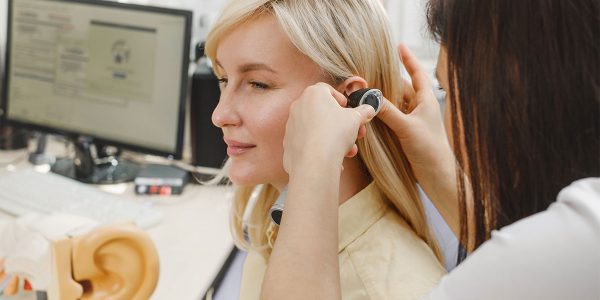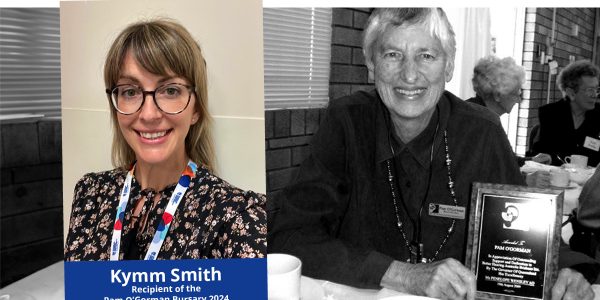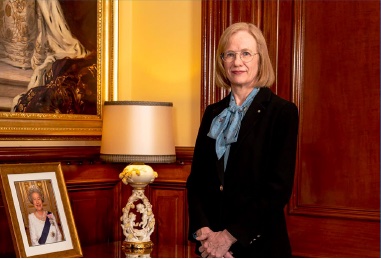Industrial Deafness: The Hidden Disability of Men

Industrial Deafness: The Hidden Disability of Men
It’s easy to overlook the long-term effects of a noisy work environment in today’s fast-paced and increasingly digital world. But industrial deafness is one of the primary causes of hearing damage in men.
The effects of excessive noise exposure leading to industrial deafness are not seen until years after exposure, and we need to place a renewed focus on this disability.
This article looks at industrial deafness, the hidden disability among men, what it is, how to prevent it, and what can be done to treat it.
What is industrial deafness?
Industrial deafness is the general term for noise-induced hearing loss resulting from one of two things:
- from working in a noisy environment for a prolonged period of time without adequate hearing protection, or
- following acoustic trauma caused by a one-off exposure to extremely high levels of noise.
Loud noise damages the tiny hair cells in your inner ear that allow you to hear. While the mechanism of hair cells and hearing damage is still unclear, our current understanding is that if enough cells are damaged hearing loss can be the result. These cells don’t grow back so permanent hearing loss is a risk.
What are the symptoms of industrial deafness?
Industrial deafness can present itself in several ways:
- Inability to hear high-pitched sounds, like birds singing
- Speech sounding muffled or distorted
- Ringing or buzzing in the ears – Tinnitus
- Feeling pressure in the ear
Depending on the type of exposure and amount of damage, these symptoms can appear immediately after noise exposure or develop over time.
Who is most at risk of industrial deafness?
Just because it’s called “industrial” deafness doesn’t mean it is limited to workers in industrial or factory settings. Anyone exposed to loud noise is at risk of industrial deafness.
Professions most at risk of industrial deafness include, but are not limited to:
- Factory workers
- Construction workers
- Truck drivers
- Farmers
- Miners
- Airline ground staff
- Carpenters/builders
- Musicians/DJs
- Stage managers
- Sound technicians
- Nightclub workers
- Restaurant workers
- Fitness instructors
- Railway workers
- Defence personnel
- Ambulance drivers
- Kindergarten teachers
The list is long but certainly not exhaustive. Any job where you are exposed to loud noise carries a risk.
However, when we look at the list above, we can see that many of these roles are usually occupied by a high proportion of men. This is why noise-induced hearing loss is generally associated with men in their mid to late forties and later.
How much is too much?
While hearing damage can happen instantly if the sound is loud enough, in industrial or work settings it is usually due to continued exposure that damage happens.
The chart below gives a general indication of how loud sounds are and how long it will take before hearing damage occurs.
Notice that when you get to the top end of the diagram, the exposure needed for hearing damage to occur drops dramatically.
The surprising group at risk of industrial deafness
The name itself suggests that only people in noisy work environments are at risk of industrial deafness. But remember, industrial deafness is an umbrella term for any noise-induced hearing loss.
There is one surprising group of people at risk of industrial deafness, and audiologists are screaming their warnings from the rooftops.
More and more, audiologists are seeing younger and younger people presenting with noise-induced hearing loss. These are young people who don’t work in noisy workplaces. So, where have they acquired their hearing damage?
The advent of headphones was a boon for the personal enjoyment of audio. We are now seeing a generation that has grown up, from a very young age, with headphones or earbuds delivering soundtracks and music – sometimes at levels high enough to damage hearing.
This unchecked, continuous exposure to loud music causes damage at a young age meaning young adults in their twenties are now suffering from the effects of industrial deafness.
It isn’t just limited to people listening to music. Gamers, in particular people playing first-person shooter-style games, wear headphones too and often increase the volume on their headsets to hear their opposition or other competitors to give them an advantage within the game. The noise levels can often be the same as if you were in an actual war zone.
Preventing noise-induced hearing loss
The best cure is prevention, and industrial hearing damage is entirely preventible. The best ways to prevent industrial deafness are avoiding or limiting exposure and wearing the appropriate protective equipment.
Limiting exposure to loud noise
Limiting your exposure to loud noise is the best way to prevent this form of hearing loss.
Don’t forget that the noise doesn’t have to be unbearably loud. You will damage your hearing even at moderately high noise levels, at long or consistent exposure.
But what if your job entails working around loud machinery or tools like excavators, nail guns, circular saws, machinery and more?
This is where adequate hearing protection comes into play.
Hearing protection in the workplace
In Queensland, your employer has a legal obligation and a duty of care to protect you from risks, including the risk of hearing damage.
Workplace Health and Safety Queensland have developed a Code of Practice for managing noise and preventing hearing loss at work.
This code of practice is available publicly for download so you and your employer can see the obligations and recommendations.
The code of practice covers:
- Who has duties in relation to the health and safety impacts of noise
- What’s involved in managing noise and preventing hearing loss
- Noise and its effects on health and safety
- Identifying and managing the risk of noise exposure
- Other dangers for hearing such as acoustic shock, vibration and ototoxic substances
- and more
The code of practice also includes some excellent resources such as:
- Noise hazard identification checklist
- A ready reckoner for safe limits of noise exposure
- A template for a noise assessment report
- Sample engineering solutions for excessive industrial noise
While it is your employer’s responsibility to look after your safety, you should always ensure you protect yourself from hearing damage. That may mean speaking to your employer about obtaining the proper hearing protection options for your role and environment.
Hearing protection options
Apart from engineering solutions for excessive noise in the workplace — like damping, insulation, and vibration pads – personal protective equipment (PPE) is a quick, effective and efficient solution.
A workplace noise assessment, as mentioned above, will determine which workers will require PPE for hearing protection and what level of protection they need.
PPE options for hearing loss include:
- Earmuffs – usually provide excellent protection with the entire ear enclosed in an insulated cap. Some earmuffs include integrated shortwave radios for site communication. Electronic earmuffs can automatically trigger sound protection when noise reaches damaging levels.
- Earplugs – these can be the disposable type that will mould to your ear canal, or you can have custom plugs made with different levels of sound damping or attenuation. Some of these can ensure that, while the overall sound level is reduced, you can still hear all pitches of sound accurately.
- Ear canal caps – these cover the opening to the ear canal rather than being inserted into it. These do not give as much protection as earmuffs or earplugs.
Whichever PPE solution is used, you must ensure that it has been:
- tested and approved per Australian Standard AS/NZS 1270:2002: Acoustics – Hearing protectors
- selected and maintained per AS/NZS 1269.3:2005 Occupational noise management – hearing protector program
Industrial deafness treatments
While permanent hearing damage from noise exposure is entirely preventable, it is irreversible once acquired.
However, this doesn’t mean you can’t do anything about it.
Hearing loss treatment
Industrial deafness usually presents itself as a loss of high-pitched sounds. So children’s or women’s voices may be harder to discern, while the rest of the pitches, mid-range and lower (e.g. bass) tones are still heard clearly.
You can treat the loss of those high-pitched sounds with hearing aids explicitly tuned to the pitches where you are suffering loss.
These days noise-induced hearing loss is usually treated with open-fit hearing aids. Open-fit hearing aids fit behind the ear, providing amplification via a small tube inserted into the ear canal. They come in two primary variants based on speaker (or receiver) location. The first is inside the ear (Receiver-In-Canal – RIC) and the second is located in the physical hearing aid itself.
By having an Open-fit device means you can hear all the pitches where you don’t suffer any loss naturally, and only those higher pitches where loss exists are amplified.
Using open-fit devices makes for a more natural-sounding outcome. Also, RICs are generally smaller as the speaker doesn’t have to fit in the body of the aid. People usually look twice to see if you are wearing a hearing aid.
Tinnitus treatment
When industrial deafness presents itself as tinnitus, there are several ways your audiologist can help you manage these symptoms.
Tinnitus treatment often entails the use of hearing aids, sound treatment, sound masking, and counselling.
Again, there is no cure, but with treatment and appropriate counselling, you can learn to adjust to your tinnitus and help reduce the impact on your life.
Conclusion
Industrial deafness is highly prevalent, especially amongst males who tend to work in roles where exposure to loud noise is normal.
Prevention is better than the cure, but there are treatment options available through your audiologist.
It is in your best interest to protect your hearing today, as any damage done now will take years to show up. But once it’s there, you can not get rid of it.
If you are experiencing the symptoms of noise-induced hearing loss, contact an audiologist today.








